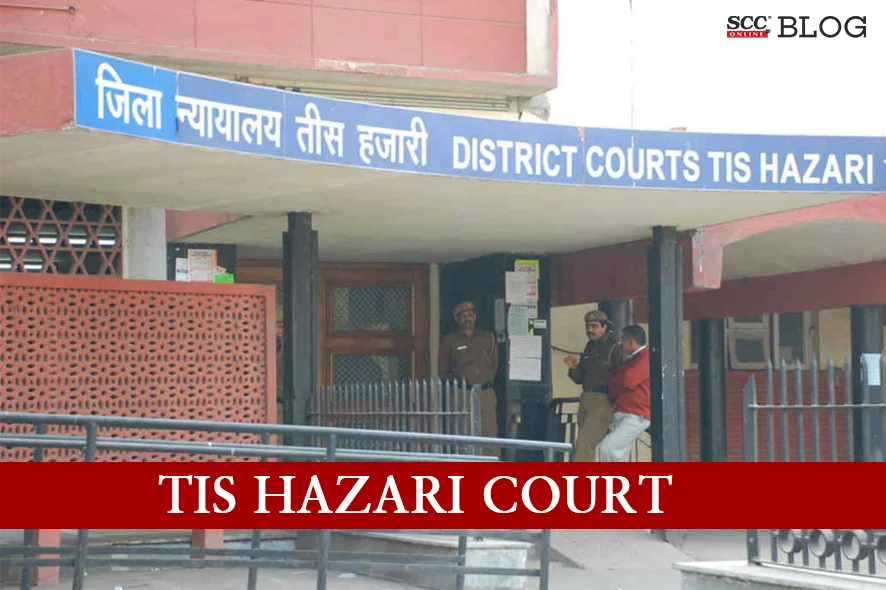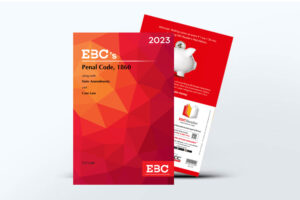Tis Hazari Court, Delhi: A case was filed against the accused persons for offence punishable under Section 170, 420 read with 34 Penal Code, 1860 (IPC) for falsely impersonating themselves as public officers and pretended to hold public office as public servants of CBI, to conduct a bogus raid at the house of the complainant. Devanshu Sajlan, J., acquitted the accused persons entitling them with benefit of doubt as the identification of the accused persons and recovery of the case property from the possession of the accused persons, which was the essential ingredient of the offence, was highly doubtful.
The Court stated that “the onus and duty to prove the case against the accused is upon the prosecution and the prosecution must establish the charge beyond reasonable doubt which it has failed to do in the present case.”
The present case is the oldest case pending in the present court and is also one of the 75 oldest cases pending in the West District, Tis Hazari Courts. The present case brings to life the fictional story portrayed in the movie “Special 26”, in which a group of cons pose as CBI officers and conduct bogus raids to loot businessmen. Facts of the present case are eerily similar to the story of “Special 26”, if not identical.
The case of the prosecution is that on 22-10-1997 at about 07:30 AM, near Mukherjee Park, Delhi within the jurisdiction of PS Tilak Nagar, the accused persons namely Pramod Kumar, Pradeep, Antu, Islamuddin, Charanjeet Kaur, Kewal Kishan, Ruby, Vijay, Sunil, S.M. Sunder, Soloman and Satish Chanana falsely impersonated themselves as public officers and pretended to hold public office as public servants of CBI, in order to conduct a bogus raid at the house of the complainant Kishori Lal and his family members. While conducting the bogus raid, the accused persons took cash of Rs. 15,000/- to Rs. 20,000/- from the almirah and forced the wife, daughter, and daughter-in-law of the complainant to hand over all the jewelry articles worn by them worth 100 tola, after which the accused persons left with the said articles. Thus, the accused persons committed the offence punishable under Section 170, 420 read with 34 IPC.
The Court noted that the testimony of PW-1, PW-3, PW-4, and PW-5 makes it evident that the accused persons were shown to the accused persons prior to the application for conducting TIP proceedings by the IO. Based on the above testimonies, it is evident that the accused persons were shown to the prosecution witnesses by the police. The said act of the police turned the entire TIP proceedings into a farce and thus, no reliance could be placed upon the order that records the refusal of the accused persons to participate in TIP proceedings on the ground that they were shown to various people at PS Dev Nagar. The refusal to participate in TIP proceedings got duly corroborated at trial and thus, the evidence led by the prosecution is not sufficient to convict the accused persons because it is settled law that if identification in the TIP has taken place after the accused is shown to the witnesses, then not only is the evidence of TIP inadmissible, even an identification in a court during trial is meaningless.
The Court however observed that certain exceptions to the same have been carved out where identification of an accused for the first time in court without there being any corroboration whatsoever can form the sole basis for his conviction. An exception to the general rule is that identification of an accused for the first time can also be made the basis of conviction in case the court is impressed by the testimony of a particular witness. However, in the present case, there are apparent contradictions in the versions of the prosecution eyewitnesses.
The Court concluded that even if prosecution version is taken to be true, the case property of the present case was recovered from three different accused persons, and hence, there were at least three different pullandas in which the case property of the present case was kept. However, when the TIP order was pursued, it stated that IO has produced two pullandas sealed. Therefore, it is evident that despite there being at least 3 pullandas of the case property, only two such pullandas were produced for the purpose of TIP of case property. Accordingly, it is impossible to ascertain whether the said pullandas pertained to the recovery made at the instance of accused Ruby or some other accused. Thus, the prosecution, accordingly, has not been able to prove with certainty that the case property which was identified by PW Archana was recovered at the instance of the accused Ruby. In absence of proof of successful TIP qua the articles allegedly recovered from the accused Ruby, there is nothing to link her to the present case.
Further, the Court opined that the facts and circumstances of the case suggested that no sincere efforts were made by police officials concerned to join independent public witnesses in the recovery proceedings. Accordingly, the non-joining of public persons in recovery proceedings is an unexplained missing link in the prosecution case as the non-joining of public witnesses creates doubt over the fairness of the investigation by police.
The Court held that the prosecution case suffers from serious infirmity since the accused persons were shown to the prosecution witnesses and hence, neither the TIP Proceedings nor the identification at trial holds any value in the eyes of law, as evidence of mere identification of the accused person at the trial for the first time is, from its very nature, inherently of a weak character. The prosecution’s entire recovery proceedings are in muddied waters considering (i) the failure of the prosecution to prove that the case property of the present matter was duly segregated from case property of other FIRs and was duly produced during TIP proceedings and (ii) failure to join independent witnesses despite availability.
[Ruby v State, 2023 SCC OnLine Dis Crt (Del) 16, decided on 18-07-2023]
Advocates who appeared in this case :
Sh. Dhirendra Kumar Yadav, Ld. APP for the State;
Sh. Ashok Kumar Tiwari, Ld. counsel for the accused.







